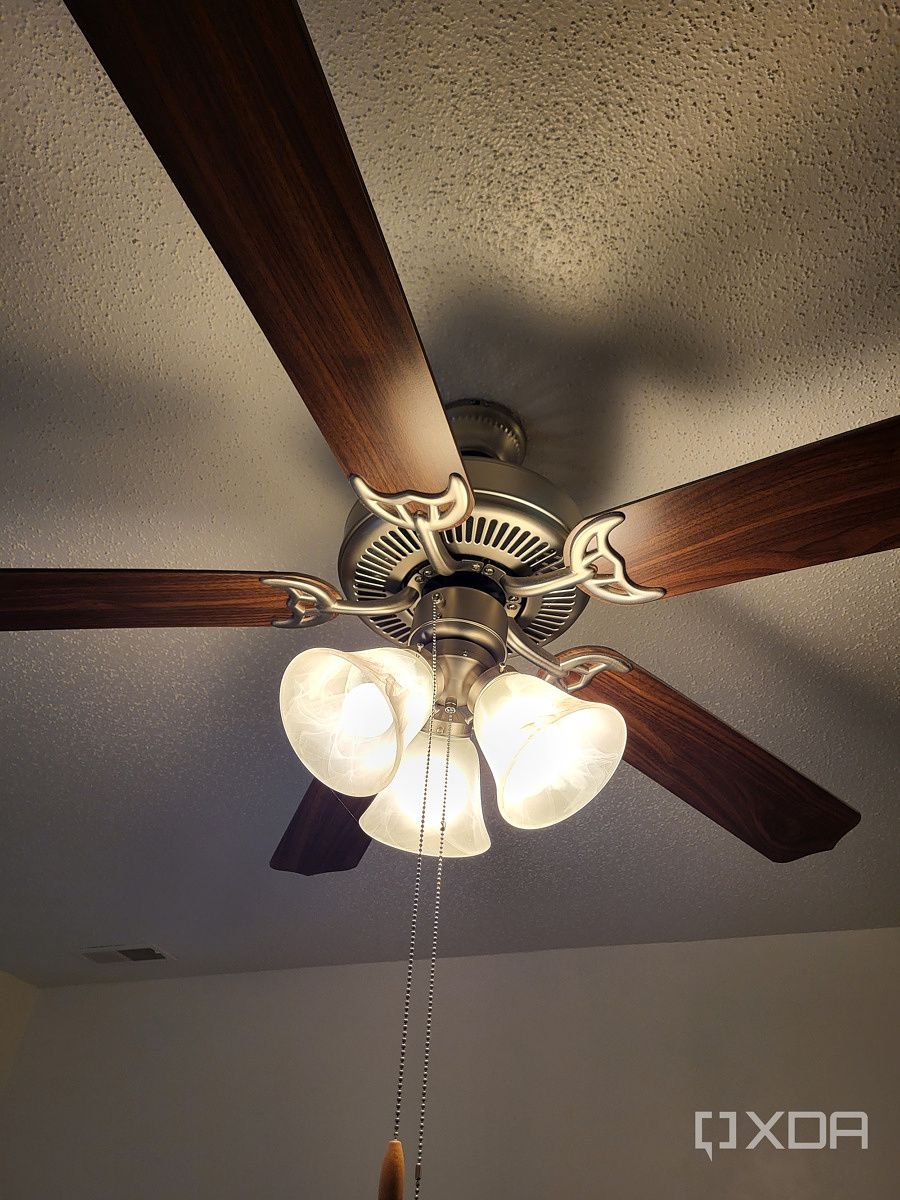Buying a flagship smartphone in 2022 shouldn’t cost you a fortune. There are plenty of options to explore that offer a top-notch flagship smartphone experience while being reasonably priced. Take, for example, the OnePlus 9RT, which can be had for ~$699 and has all the bells and whistles you expect from a modern-day flagship, including a gorgeous display, capable main cameras, and flagship processor. But how does it compare to a seasoned flagship phone like the Galaxy S22? There’s only one way to find out.
Samsung Galaxy S22 Vs OnePlus 9RT: Specifications
| Specification |
Google Pixel 6 Pro |
OnePlus 9RT |
| Build |
- Aluminum mid-frame
- Gorilla Glass Victus back
- Gorilla Glass Victus front
|
- Glass back
- Metallic frame
|
| Dimensions & Weight |
- 146 x 70.6 x 7.6 mm
- 168 gram
|
- 163.2 x 73.2 x 8.7mm
- 197g
|
| Display |
- 6.1-inch AMOLED 2X Display
- 2340 x 1080, 425 ppi
- HDR10+ certified
- 120Hz refresh rate
- Always On Display
|
- 6.62-inch FHD+ Samsung E4 AMOLED
- 120Hz refresh rate
- 600Hz touch sampling rate
- 1300nits peak brightness
- 1000000:1 contrast ratio
- 100% DCI-P3 coverage
- HDR10+
|
| SoC |
- Qualcomm Snapdragon 8 Gen 1 (the US, China, India, and other regions)
- Exynos 2200 (Europe, South America, and other regions)
|
- Qualcomm Snapdragon 888
- 1x Kryo 680 (ARM Cortex X1-based) Prime core @ 2.84GHz
- 3x Kryo 680 (ARM Cortex A78-based) Performance cores @ 2.4GHz
- 4x Kryo 680 (ARM Cortex A55-based) Efficiency cores @ 1.8GHz
- Adreno 660 GPU
|
| RAM & Storage |
- 8GB RAM
- 128GB/256GB UFS 3.1 storage
|
- 8GB/12GB LPDDR5 RAM
- 128GB/256GB UFS 3.1 storage
|
| Battery & Charging |
- 3,700mAh
- 25W Wired fast charging (charger not included in box)
- 15W wireless charging
|
- 4,500mAh
- 65W fast charging support
|
| Security |
Ultrasonic in-display fingerprint scanner |
In-display fingerprint scanner |
| Rear Camera(s) |
- Primary: 50MP wide, f/1.8
- Secondary: 12MP ultra-wide, f.2.2
- Tertiary: 10MP telephoto, 3x optical
|
- Primary: 50MP Sony IMX 766, f/1.8, OIS
- Ultra-wide: 16MP, f/2.2
- Macro: 2MP, f/2.4
|
| Front Camera(s) |
10MP |
16MP, f/2.4 |
| Port(s) |
- USB Type-C
- No headphone jack
- No microSD card slot
|
- USB Type-C port
- No headphone jack
- No microSD card slot
|
| Audio |
|
|
| Connectivity |
- 5G: Non-Standalone (NSA), Standalone (SA), Sub6 / mmWave
- LTE: Enhanced 4×4 MIMO, Up to 7CA, LTE Cat.20
- Wi-Fi 802.11 a/b/g/n/ac/ax (2.4/5/6GHz)
- Bluetooth v5.2
|
- 5G
- LTE
- Wi-Fi 6
- Bluetooth 5.1
|
| Software |
- Android 12 with One UI 4.1
- Four major Android OS updates promised
- Five years of security patches
|
|
| Other Features |
- IP68 water and dust protection
- Dual SIM
|
- Vapor cooling chamber
- Alert slider
|
Design & Display
Both the Galaxy S22 and the OnePlus 9RT are great-looking phones. The Galaxy S22 is on the smaller side, measuring 146 x 70.6 x 7.6 mm and weighing just 168g. It features a minimalistic design with rounded corners and a flat aluminum middle frame, which looks a lot like the current iPhone. The camera island on the back is the most striking element of the Galaxy S22. Both front and back are protected by Gorilla Glass Victus.

The OnePlus 9RT looks less exciting than the Galaxy S22, but it’s also made with premium materials, featuring aluminum side rails and a glass back. The back has a silky texture which feels nice to touch. OnePlus has also done a great job with the weight distribution, so the phone is comfortable to hold. OnePlus’ signature alert slider is placed on the right side, while the rectangular camera island on the back houses three cameras.

The Galaxy S22 has a 6.1-inch FHD+ AMOLED display with a variable refresh rate of up to 120Hz. The OnePlus 9RT, on the other hand, has a bigger 6.62-inch AMOLED display with a 120Hz refresh rate. Both phones can reach up to 1300 nits in auto-brightness mode, offer 100% DCI-P3 coverage, and support HDR10+ content.
While both displays are neck to neck in terms of raw numbers, the Galaxy S22 has a superior panel compared to the older Samsung E4 panel used by the OnePlus 9RT. The difference is certainly not huge, and unless you have trained eyes and have used a lot of flagships, you’re unlikely to notice
Camera
On paper, both phones boast capable camera hardware. The Galaxy S22 features a triple camera system, comprising a 50MP f/1.8 main shooter, a 12MP f/2.2 ultra-wide camera, and a 10MP f/2.4 telephoto zoom lens with 3x optical zoom. For the OnePlus 9RT, we’re looking at a 50MP Sony IMX766 main sensor, a 16MP ultra-wide shooter, and a 2MP macro lens.
As you can see, the Galaxy S22 has superior hardware as it offers a 10MP zoom lens. You won’t get crazy good zooming like the Galaxy S22 Ultra, but it gets the job done. The OnePlus 9RT doesn’t have a dedicated zoom camera, so any zooming you do will be digital, and the final image may not look as sharp.
The Galaxy S22 and OnePlus 9RT both have a 50MP main shooter. In good lighting conditions, both phones produce sharp images with high dynamic range and accurate color reproduction. But in low-light and dark conditions, the Galaxy S22 is much better and more reliable than the OnePlus 9RT.
The OnePlus 9RT’s 16MP ultra-wide camera is nothing to write home about. It produces serviceable photos in broad daylight, but its low light performance leaves a lot to be desired.
Galaxy S22 camera samples






OnePlus 9RT camera samples

Overall, the Galaxy S22 has a more versatile and reliable camera system. It offers significantly better low-light performance, a better ultra-wide camera, and a dedicated zoom lens. But for a device that costs nearly half the price of the Galaxy S22, the OnePlus 9RT still delivers an impressive camera performance.
Performance
The Galaxy S22 is powered by the top-of-the-line Qualcomm Snapdragon 8 Gen 1 chipset, although it is also sold with the Exynos 2200 SoC in regions where the OnePlus 9RT is not sold in. Meanwhile, the OnePlus 9RT opts for the last year’s Snapdragon 888 SoC. The Galaxy S22 has the OnePlus 9RT beat here as it’s using the newer and more powerful chipset. In particular, the Snapdragon 8 Gen 1 offers 10% faster CPU and GPU performance while reducing the peak power consumption by up to 20%. But make no mistake: the Snapdragon 888 chipset inside the OnePlus 9RT is no slouch and can easily hold its own against other Snapdragon 8 Gen 1-powered phones. OnePlus also puts a lot of effort into optimizing OxygenOS, so the OnePlus 9RT should feel as fast and smooth as any high-end flagship in real-world usage.
The OnePlus 9RT also has a large vapor cooling champer to keep thermals in check during intensive workloads such as gaming.
Battery and Charging
The OnePlus 9RT picks up an easy win here, featuring a larger 4,500mAh battery to the Galaxy S22’s measly 3,7000mAh cell. If you’re a heavy user, the Galaxy S22 will struggle to last you through the day. The OnePlus 9RT doesn’t have an extraordinary battery life by any means, but it will at least get you through the day.
The OnePlus 9RT also blows the Galaxy S22 out of the water when it comes to the charging speed, offering super 67W wired fast charging. The Galaxy S22 tops out at 25W but does support wireless charging, which is missing on the OnePlus 9RT.
Software
The Galaxy S22 runs Android out of the box with One UI 4 on top. Samsung promises up to four years of OS updates and five years of security updates, putting even Google Pixel to shame. The OnePlus 9RT ships with OxygenOS 11 based on Android 11 but is upgradable to Android 12, although many users dislike the Android 12 upgrade on OnePlus devices. OnePlus promises three years of OS updates and four years of security updates, which, while not as impressive as Samsung’s, is still better than what some other affordable flagships on the market offer.
Conclusion
Choosing between the OnePlus 9RT and Galaxy S22 is one of the easiest decisions you’ll make. There’s a significant price gap between the two, and both phones cater to different audiences. The Galaxy S22 starts at ₹72,999, while the OnePlus 9RT is priced at ₹42,999. It’s not a fair comparison at all, and your answer is more than likely dictated by your budget.
The vanilla Galaxy S22 offers a beautiful AMOLED display and capable flagship-grade cameras.
The Galaxy S22 has a better display, a faster chipset, and more versatile and capable cameras. It handily beats the OnePlus 9RT in all areas except the battery life and charging speed. It also gives you the best software support on the market, and Samsung generally offers good exchange rates should you decide to jump to a newer Galaxy flagship later down the road. You can also check out the best deals on the Galaxy S22 to save money.
The OnePlus 9RT offers flagship hardware at an affordable price.
If the budget is the constraint, the OnePlus 9RT is a no-brainer. It’s one of the best value-for-money flagships in the Indian market, and when you factor in deals and cashback, it looks even more enticing. You get a beautiful AMOLED display, flagship Snapdragon 888 chipset, capable main shooter, and blazing fast charging speed.
The post Samsung Galaxy S22 vs OnePlus 9RT: Samsung’s flagship takes on OnePlus’s affordable flagship appeared first on XDA.
from XDA https://ift.tt/Tlmo0iX
via
IFTTT








































